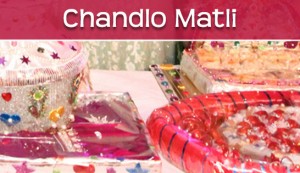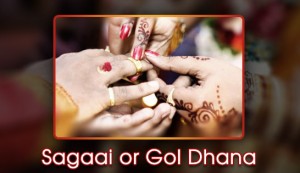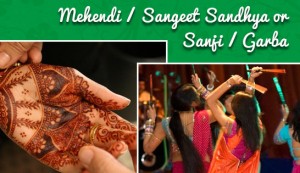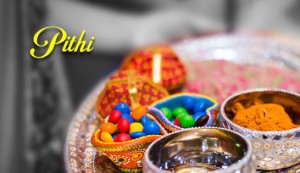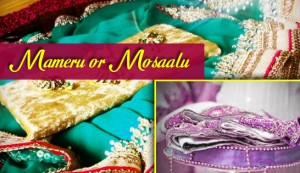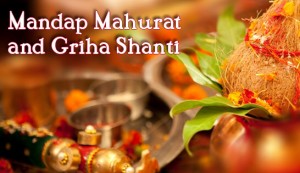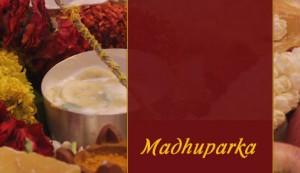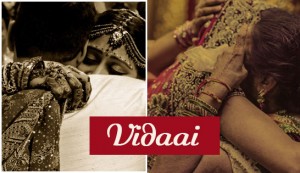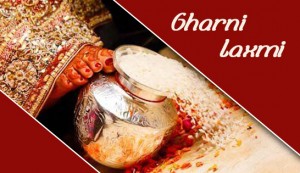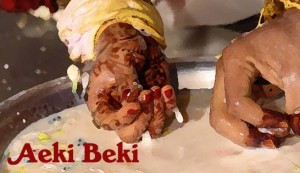Tamil wedding rituals are known for their elegance. The ceremonies are detailed and unique in terms of traditional richness. Marriage rituals extensively display the heritage imbibed from Vedas and Puranas.
Besides acting in accordance with the customs laid in the religious texts, they also perform certain other rites known as the Loukika Custom. However, wedding rituals vary from the Brahmin (Iyer) and Non-Brahmin communities in several contexts.
If you happen to attend a Tamil Hindu wedding, you will be charmed by its time-honoured aspects. When a Tamil family plans a marriage for their son/daughter, many find a suitable match for their children through matchmaking, while others approve love marriages also.
In the event of an arranged marriage, the families match the horoscopes of the prospective bride and the groom. When these match, parents of both candidates exchange vows to symbolise the union of the two families.
Below, we have given the major pre-wedding, wedding day and post wedding rituals prevalent in the Tamil culture and the significance attached to them. Besides these, there are many small and typical rituals which might differ from one family to other.
PRE WEDDING RITUALS
The following rituals are common to both the Brahmin and Non-Brahmin communities.
Panda Kaal Muhurtham- Worshipping the ancestral deity
It is customary for every Indian family to worship their ancestral deity (kula devata) before embarking on any important occasion. Tamil marriages are also not different, Panda Kaal Muhurtham is an important pre-wedding ritual held on the eve of the wedding day.
The familial Lord is symbolically represented by a bamboo pole, which is a portrayal of fertility. It is a short programme where both the bride’s and groom’s parents along with their relatives offer prayers to the ancestral deity for a smooth marriage process.
The significance of Panda Kaal Muhurtham: It is a common belief that evil spells can harm the bride-to-be and groom-to-be. Thus, it is important to pray to the divine and seek his blessings for an undisturbed wedding process.
Sumangali Prarthanai – Prayer for married women ancestors ( Loukika Custom)
In Sanskrit, Sumangali refers to a married woman whose husband is still alive. The Sumangali Pooja is a pre-wedding ritual organised to offer prayers to the women ancestors of the family who have died before their husbands.
In this ritual, five or seven married women within the families are invited who are considered as the embodiment of the deceased Sumangalis. All invited Sumangalis are required to be present at the occasion wearing a nine-yard sari (Madisar). These invitees are then worshipped and are treated with a traditional feast on an authentic way.
The ritual of Sumangali poojai is different from one family to another. A lot of variation regarding the ritual is seen among the Brahmin and non-Brahmin Tamil families.
The significance attached to this ritual: In Hindu tradition, it is a common belief that only Sumangali ( a married woman who is not a widow) can perform auspicious ceremonial activities. A married woman is also considered a representation of the Goddess of prosperity, wealth and luck. It is a way of blessing the soon-to-be married couple for a prosperous married life through the personification of the deceased ancestors.
Pallikai Thellichal- Ritual of sprouting grains in earthen pot (Puranic)
Another significant pre-wedding ritual is Paalikali Thelippu / Karappu performed by the bride’s family and it signifies fertility. Paalikai mean earthen pots that are prepared a day before of the wedding and are spread at the base with mango leaves (mavilai) and sand.
In this custom, married women decorate 7 clay pots with sandalwood paste and Vermilion (kumkum) powder, and then fill them with curd and 9 types of pre-soaked grains including green gram, black gram, mustard and paddy seeds. They leave the grains to sprout, thereafter, unmarried girls (Kanya) immerse those pots into the nearby water body with a wish to feed the fish on the grains.
In this ritual, the sprouted grains are compared to the bride and the groom. When the grains are consumed by the fish, it is believed that the guardian angels present in all eight directions are invoked. It is expected that the celestial beings bless the couple for a happy and healthy life.
Naandhi Shraaddham– Reverence to ancestors
Naandi Shradham or Vriddhi shraaddham is yet another essential ritual for both the bride and the groom’s families. It is a custom to invoke the ancestors to seek blessings for the prosperity of both. Fathers of the bride and the groom take part in the worshipping ritual at their own homes. In earlier days, groom’s father carried out
In earlier days, groom’s father carried out nandii before the groom started for the bride’s home. But nowadays, this ritual is performed at the marriage venue itself on the day of the wedding and sometimes a day prior to it.
The ritual requires appeasing the presiding deities or the Nandi Devatas. A leaf-laden branch of the pipal tree is installed and is cleansed with milk. The ceremony finally gets completed after a dhoti and a saree is presented to the marrying couple.
Eight to ten Brahmins are invited to the respective homes of the bride/groom and a traditional feast is arranged. It is also customary to offer fruits, coconut, flowers, betel /betelnut, sweets and traditional clothes (veshti angavastram) to the Brahmins and ask for their blessing for the wedding alliance.
Nichayathartham –The Engagement (Loukika)
Nichayathartham is the formal engagement ceremony between the bride and groom that takes place in the presence of all elders of both the families. The function is held the day before the wedding which starts after paying homage to Lord Ganesh (pillaiyar), vanquisher of all obstacles. Then, both the bride/groom’s families announce their final agreement to the wedding.
The groom’s family gifts a traditional South Indian silk saree, and traditional jewellery to the bride as a gesture of acceptance. Similarly, bride’s parents also gift the groom with a new set of clothes as their acknowledgement of the marriage. The bride and the groom then change into the new dress gifted by each other’s family.
Groom’s sister and bride’s brother also play an active role in this ceremony. There is a custom of gifting two dolls by the groom’s sister to the bride for playing (Vilayadal). To show their recognition for their future brother/sister-in-law, groom’s sister and bride’s brother apply vermillion (kumkum) and sandalwood (Chandan) tilak on the bride’s/groom’s forehead respectively and offer a floral garland too. After this, the bride and the groom exchange rings in the presence of friends and relatives.
In addition to the above, Tamil Brahmins also perform Vang Nischay (Loukika) – a ceremony of exchanging Nalikera coconut and Thamboola, betel leaf/nut between both the families in the presence of elderly members to acknowledge the marriage alliance.
- Lagna Patrika: a contract by both parents about the performance of the marriage and reading of the invitation card by the priest at the groom’s place.
- Pongi Podal (Loukika): a feast organised at the aunt’s place for niece (bride) and nephew(groom) to wish them for their new life ahead.
- Janu Vasam (Loukika): Janu means knee and Vasam mean cloth. In earlier days, a Brahmin boy after receiving his upanayanam (sacred thread ceremony) and entering into the life of Brahmacharin (celibacy) was expected to wear just a white cloth till his knees and lead a saintly life till he got married. Finally, on the eve of his wedding day, he was presented in front of the would-be bride’s relatives for people acceptance. But, nowadays, the ritual is limited to the procession and public approval only.
- Vritham and Kappu Kettal (Vedic): It is an essential ritual for the boy for whom marriage has been fixed. Before he gets married, he needs to take permission from his father (Guru) to end his Brahma Charya Vritha (celibacy), to marry and lead a life of a Grihastha (family life).
Wedding Day Rituals
Mangala Snaanam – A Purifying Bath
Like any other Hindu marriage custom, Mangalasnanam or a purifying bath is an integral ritual of a Tamil Wedding. It is a practice of ceremonial bathing of both the bride and the groom with turmeric (Haldi), Vermillion (kumkum) and oil. Elders anoint the mixture on the soon-to-be couple at their respective homes before the purifying bath.
The ritual takes place at the break of the dawn on the wedding day. According to Indian tradition, the significance of this early morning bath is to refresh the couple’s bodies by lessening stress and initiating positive energy for an extensive wedding process.
Wedding Ceremonies
Wedding in Tamil Nadu is mostly organised during the early morning hours and the ceremonies last for about an hour or so. Close families and friends are invited to attend the marriage ceremony and bless the newly wed couples. The function is finally followed by a traditional feast.
Mappillai Varavetpu – Welcoming the Bridegroom
The wedding ceremony starts with the arrival of the groom accompanied by his relatives and friends. He is given a warm welcome by the bride’s younger brother. He also receives greetings “Aaraathi” from two married women from the bride’s family. Bride’s father treats him with due respect and thus the groom is escorted to the wedding stage.
Kaasi Yatra – Groom’s pilgrimage
Kashi yatra is a very intriguing ritual of a Tamil Wedding. The groom plays the part of abandoning all material desires and proceeds for the pilgrimage to Kashi. At this point of time, bride-to-be’s brother blocks the groom’s journey and woos the groom back to the marriage hall. In return for this service, the bride’s brother receives a gold ring as a gift from the groom’s family.
This ritual can differ from one family to the other. In some families, bride-to-be’s father requests the groom to accept the daughter as his life partner (when groom pretends to go to the pilgrimage) and persuades the groom to return to the family life.
Finally, the groom agrees to take responsibility of the bride and he is finally escorted to the wedding place.
Wedding Attire
The bride wears a traditional silk saree (Kanchipuram) in a red tone with thick golden borders and is decked in heavy gold jewellery. The groom wears a white dhoti, a shirt with a golden border or sometimes sherwarni. Traditionally, he also wears turbans (thalappas) on the wedding day. The bride (manamahal) arrives at the wedding site with the Tholi (Bridesmaids), her relatives and her friends and she and the groom (maapillai) sit around a priest on the stage set for the wedding (mandap).
Kanyathanam & Kannika Thaanam – Arrival and giving away of the Bride
Similar to the ritual of Kanyadan ceremony of any Hindu culture, Kanyathanam is the ritual when bride’s father hands over all responsibility of his daughter to the groom and the groom, in turn, accept her and assures her parents to provide her with a life of fulfilment.
It is a very emotional ritual because after the bride arrives at the wedding site she is made to sit on her father’s lap. This ritual symbolises a father letting his small daughter who played in his lap to go away with someone whom he thinks perfect for taking responsibility of.
Sapthapathi – Sacred Seven Steps
Next in the ritual line is Sapthapathi, an essential element of any Hindu wedding. The bride and the groom take seven steps together encircling the Holy Fire as a harbinger of their new life. With each step, the priest recites hymns from the holy verses to unite both the souls thereafter.
The significance of the seven steps: the groom and the bride promise to carry on with their life together while following the four purposes of human existence: Dharma (religion and ethics), Artha (wealth and prosperity), Kama (love, fertility and family) and Moksha (spiritual liberation).
Thaali Kattu – Tying of the Gold Necklace
Sapthapathi is followed by Thaali Kattu ritual. The groom presents the Bride with Koorai (wedding saree) and the Thali (gold necklace). The Koorai and Thali are circulated amongst the family gathering so that they can each bless the items. The bride then leaves the Manavarai ( wedding stage) in order to change into the Koorai (Silk Saree). After she returns to the Manavarai wearing the
After she returns to the Manavarai wearing the Koorai, holding a garland for the groom, he ties the Thali (gold necklace) around the bride’s neck, signifying the change in her marital status amidst traditional wedding song kettimelan. The couple is thus pronounced as husband and wife.
Finally, they exchange garlands to the beat of the Thavils (drum) and music of Naathaswarams (classical pipe music).
Ammi Midhithal- Treading on the Grindstone
Another significant post-ceremony ritual is the Ammi Midhithal (Treading on the Grindstone). It is a ritual where the bride is required to place her feet on a grindstone, after walking around the bridal platform thrice. The moment she walks on the grindstone, her new husband adorns her second toe with tiny ringlets (metti) and symbolically shows her the Arundhati (Alcor) star.
The Significance of showing the Arundhati (Alcor) star and wearing metti: Hindu legends relate Arundhati, the wife of sage Vasishta as an extraordinary woman. She is remembered for remarkable loyalty and devotion to her husband. During marriage ceremonies, she is invoked by the groom by asking the “bride” to look at the Arundhati star and be like her throughout her life.
The metti is worn by both the bride and the groom. According to traditions, as wearing a gold necklace (mangalyam) by the bride indicates that she is married and any other men staring at her would instantly know that she is married, likewise wearing a toe-ring by the men would inform another woman that he is married to someone else.
Wedding Games
A collection of meaningful games are played in the post-ceremony phase but vary widely between families.
These games were played in olden days in the period when arranged marriages were strictly prevalent and the bride and the groom could never meet beforehand. These were tricks with an intention to introduce the newly-weds to each other so that they could overcome shyness and unfamiliarity they had. In modern times, these games are played only to keep the tradition alive.
All the games are quite interesting and relate to posterity and child care. In one trick the priest drops a tiny toy into a vessel of water, and the newly married couple push their hands hard into it, trying to be the first to retrieve the toy. This is to signify that the winner will have his/her say on the gender of the first-born child.
This trick becomes more entertaining when the priest (for the first few times) only pretend to drop the toy in while leaving the couple to search in vain. This process is mainly to provoke the couple playfully come in close contact with each other for the first time.
Another game proceeds when the groom’s Angavastram is fashioned into a makeshift cradle and a rock is placed inside it (symbolising the first born). He gently shakes the cradle to put the baby to sleep, while the bride hums a lullaby. It is essential that the priest splashes some turmeric-water on both the bride and the groom as if the kid has peed in sleep.
Wedding Ritual practised by Tamil Brahmins:
- Maalai Maatral, Oonjal, Sambandhmale (swing ceremony and exchange of garlands): A Loukika custom, held before kanyadanam, it is a ritual wherein the bride and the groom exchange floral garlands three times to begin their holy union. Married ladies of the family offer milk and banana to the couple while they are seated on a swing.
POST WEDDING RITUALS
Sammandhi Maryathai- Exchange of gifts
After the marriage ceremonies are over and before the bride leaves for her new home, both the bride and the groom’s family gather together to exchange gifts to mark the beginning of a post-marriage relation. The gifts can range from jewellery, clothes or artefacts.
Then comes the most sentimental segment of any marriage, the time for parents and relatives to bid adieu to the bride from her parental home. Both she and her spouse receives blessings for a happy married life.
Grihapravesham- Welcoming of the bride
When the bride finally reaches her destination, the groom’s mother welcomes her with much love and adoration. Groom’s mother performs symbolic rituals similar to any Hindu Grihapravesh ceremony and invites her to join the family forever.
Groom’s family organises several post-wedding rituals which are helpful to make the bride feel at home. These occasions are meaningful and are also filled with fun and enjoyment.
Reception: Inviting guests for a feast
It is a modern inclusion to the post wedding rituals. Groom’s family hosts a reception party and invite friends and other relatives to bless the newly married couple. The guests are also treated to lunch or dinner according to convenience.
Tamil weddings are a great affair as they intricately follow customs and traditions laid in the Vedas and Puranas. Though many have been transformed with a modern touch, yet a classical feeling is still kept intact.
If you want to plan and manage a wedding in your family, WedPlan: The Online Wedding Planner Software takes the stress out and helps you to organise everything super-easy. Request a FREE demo and check it out yourself.


